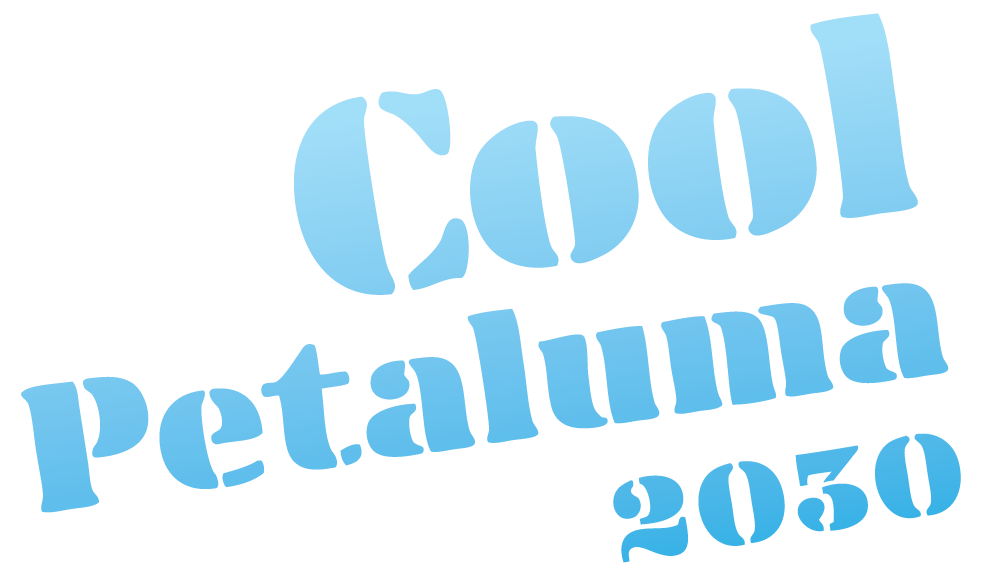Drought or Deluge? This Petaluman is ready!
By Annie Stuart
After two historically wet winters, memories of past droughts may have dimmed for some. But Mary Lindsay clearly remembers the summer of 2022. “We were in a colossal drought, so the grass in our backyard looked terrible,” she said. “It was common knowledge that grass lawns don’t make a lot of sense in California, but I just didn’t know what to do with our yard.”
She and her husband, Steve, started exploring their options. “Thanks to the Cool Block program, we learned about drought-tolerant landscapes, discovered the resources available, and were inspired to act,” she said. “I soon realized there’s a ton you can do to create a really cool space!”
It’s impossible to escape Mary’s contagious enthusiasm about her backyard transformation, which means she didn’t escape her friends’ merciless teasing. “I was so excited about the project that when my friends saw me coming, they would say, ‘If Mary starts going on about Cool Blocks, go pour yourself a drink!’”
“Grass… we were over it!”
For Mary and Steve, replacing the grass with sheet mulching was the logical first step. This process involves layering cardboard or newspapers, mulch, and compost to smother grass or weeds and improve the quality of the soil.
The City of Petaluma’s Mulch Madness program provided a welcome assist. It offered free mulch, compost, cardboard, and irrigation materials needed to convert their sprinkler system to a drip system. (Who says there’s no such thing as a free mulch?) With Mary’s husband and son providing free labor as well, this part of the project was financially painless – and was completed by late summer of 2022.
Water, water, everywhere?
Even in drought years, we have access to more water than we think we do. The next step in Mary’s journey involved conserving and reusing what she could. Through Cool Petaluma and Daily Acts events, she began to learn about both greywater systems and rainwater catchment, including installation incentives and other free resources.
Greywater is wastewater that’s generated from bathroom sinks, showers, tubs, and washing machines. Greywater systems turn this “waste” into a watering resource for residents, who use up to 8,000 gallons of water annually for clothes washing alone. Mary took the plunge and first engaged The Water Folk to install a laundry-to-landscape greywater system to one part of her yard.
But she didn’t stop there. Next on the docket was installing a rainwater catchment system, also plumbed by the Water Folk. “You can collect and sequester in the ground more water from your roof than from laundry greywater systems,” said Mary. In fact, just one inch of rain from a 1,000-square-foot roof will yield more than 600 gallons of water!
Still, given the profound drought of 2022, she was doubtful that her rain catchment tanks – which could hold 1,000 gallons – would overflow. “Would we ever get that much rain?” she wondered. “But in December, the tanks began to fill, even before the arrival of the winter’s atmospheric rivers. I was obsessed – and was constantly checking the rain gauge.”
From roof to rain garden
Mary had realized that the rain catchment tanks on the utility side of her house could easily supply a nearby rain garden – a planted depression in the soil, which slows and sinks rainwater into the ground, keeping it from becoming stormwater runoff. “With every rain,” she said, “the garden would fill and slowly seep into the ground as designed – it was a thing of beauty!” Another bonus? No matter how torrential the rainstorms, none of the water flowed into the street.
Once again, local resources helped to defray some of this project’s costs. “I sketched a plan and got helpful free advice from a Daily Acts consultant as well as a free home visit from three generous gardeners through the UC Master Gardener Program of Sonoma County,” said Mary. One gardener specialized in irrigation and another in plants.
Her wasteland of a lawn transformed into a desirable destination, which now housed herbs, rocks, drought- and water-resistant plants such as lime-colored Ceanothus Diamond Heights, lantana, and lavender, as well as her favorite: a white-flowering manzanita tree.
Complementing the rain garden was a permeable seating area, created by Felix Lopez with La Costa Landscaping. Here, she and family and friends now admire birds, bees, and butterflies, which are attracted by the flowering plants and bird feeder. As she talked, we were visited by chickadees, house finches, and hummingbirds. “I love hearing and seeing birds,” she said. “They’re like magic!”
The final touches
Mary wasn’t entirely sure she wanted to plant a vegetable garden at the other end of her backyard, but last summer’s first yield got her hooked. “It was beginner’s luck, for sure,” she said. “We had an incredible garden – so much squash and Gretel eggplant, which has purple flowers that bloom all summer long.”
Although she finds summer vegetable gardening more fun, she was quick to point out the little gem lettuce, broccoli rabe, chard, and cauliflower that had all fared well throughout the winter. “Our raised beds are so tall, though, we’ll need a doggone ladder to harvest any tomatoes we plant!” said Mary, who then reflected on the potential benefits of a produce exchange with her tomato-rich neighbors.
As we ended our conversation, it was clear to see that Mary’s pride is well earned. With a lot of imagination, enthusiasm, and follow through, as well as help from free, local resources, she’s transformed her dying grass into an exquisite, drought-tolerant garden for the future. “Now, I really want to go out there!” she said.
RESOURCES:
Felix Lopez with La Costa Landscaping: 707-235-5982

